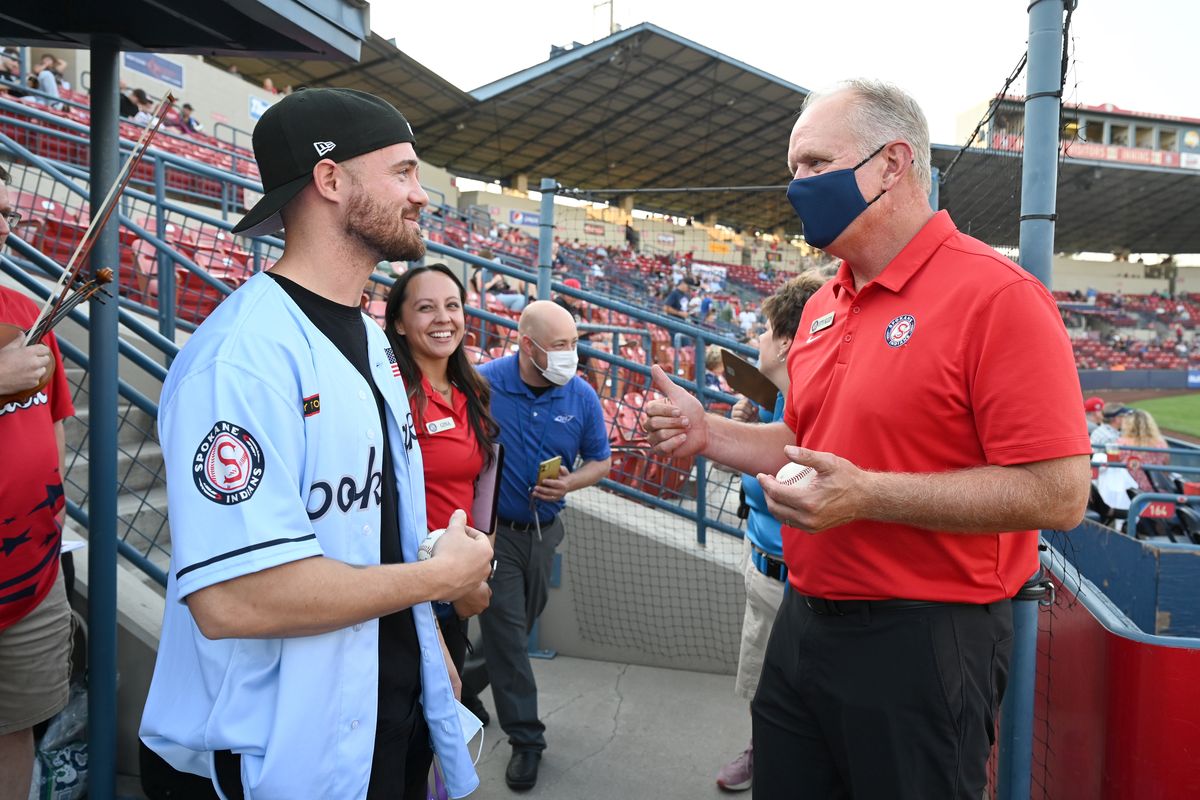Spokane Indians featured in New York Times writer’s ruminations on travel, family and COVID-19

For the second time in a little over a year, Otto Klein started receiving kudos from colleagues Tuesday about the Spokane Indians being featured in the New York Times.
“There were people saying, ‘You guys are great ambassadors to the city,’ ” Klein, the minor league baseball team’s senior vice president, said. “I see it as only a positive thing.”
Seattle-area author Jon Mooallem visited Avista Stadium in mid-August, the same night a local Afghanistan veteran threw out the game’s first pitch. The result is a 5,000-plus word essay that is a snapshot not only of a place, but also of a father’s angst at seeking normalcy east of the Cascades in the middle of the pandemic.
“I didn’t want my kid stranded at home or a ballooning network of other 8-year-olds needing to be swabbed, just because somebody’s idiot father let his guard down in Spokane,” Mooallem, a freelance author based on Bainbridge Island, Washington, wrote in his piece.
Mooallem declined via email to comment on his travel essay, saying it was personal and that it should stand on its own.
It’s the baseball game, a Thursday evening matchup with the Hillsboro Hops, that prompts Mooallem’s road trip, but it’s not where the entirety of the story takes place. Along the way, he meets Ken Spiering, the artist behind Riverfront Park’s Red Wagon statue. He also tells the story of Jack “Lucky” Lohrke, and why the World War II veteran and former third baseman hated the nickname.
He also says he’s inspired to visit Spokane because, as a West Sider, he’d heard “a lot of liberals disparage Spokane.” While there’s some evidence of that in Mooallem’s essay, the overall tone is kind to Spokane, said Kate Hudson, public relations manager for the tourism booster group Visit Spokane.
“There’s some realness with this piece,” she said, noting that she’d had several of the same thoughts while trying to navigate the pandemic with her own children.
Hudson compared the attention to detail in Mooallem’s reporting to the locally maligned essay published in March 2017 by the British newspaper The Guardian. That piece, which contained several factual errors, attempted to tie the fortunes of Spokane with the Gonzaga University men’s basketball team, while Mooallem highlighted other parts of Spokane culture, including its art scene, Hudson said.
“Even though he does take a couple of digs at us, we brought him joy at a time when he’s feeling depressed and overwhelmed,” she said.
Hudson and Klein pointed to the vivid final scene of Mooallem’s essay, when he describes watching kids race around the bases after the Indians’ 4-3 win and missing his own children.
“He wrote this as we’re back on the upswing of the pandemic,” Klein said. “I thought he captured that moment in time.”
Klein, who is a main character in Mooallem’s piece, said he approached the interview the same way he has with other media outlets. That included when the New York Times came calling in summer 2020, for a story looking at the relationship of the ballclub to the local Spokane Tribe of Indians.
“We always love telling our story. We love sharing the great qualities of our region,” Klein said.
Part of the job of promoting tourism in Spokane is showing different travel writers around, Hudson said. She said it was refreshing to see someone arrive at such an optimistic place exploring the city on his own.
“I think that he found a moment of peace here,” she said. “I think it’s a positive thing.”